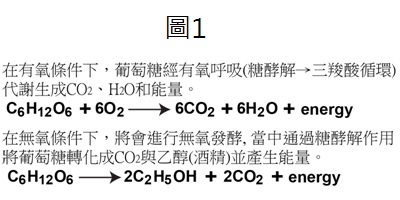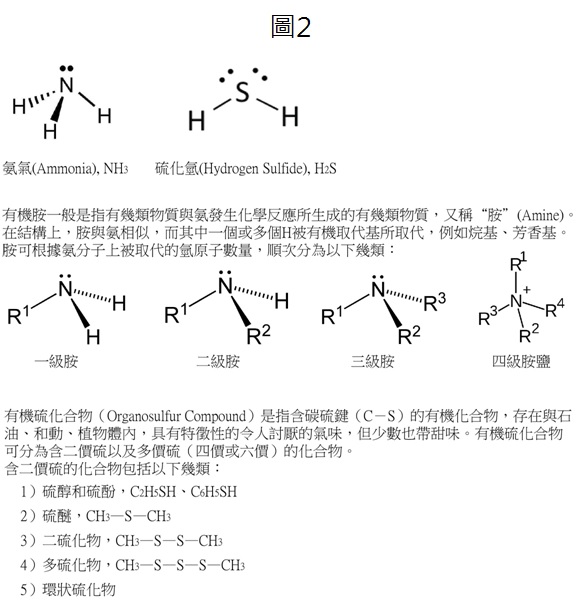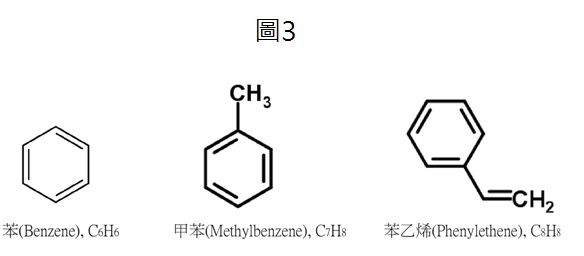- About us
- Funding services
- Estimated Application Timetable for FDCT Funding Schemes
- Account Registration
- Guidelines, Forms, Styles, and Templates
- Funding Scheme for Scientific Research and Innovation
- Funding for enterprise innovation and R&D
- Funding Scheme for External Science and Technology Cooperation
- Funding Scheme for Scientific Research Platform
- Funding Scheme of Macao for Science and Technology R&D Talent
- Past Project Funding Schemes (2024 or earlier)
- Connecting Macao and Hengqin
- S&T cooperation
- S&T award
- Transformation of Achievements
- Information disclosure
- Frequently asked questions (FAQ)
- Opinion Survey.
- About us
- Funding services
- Estimated Application Timetable for FDCT Funding Schemes
- Account Registration
- Guidelines, Forms, Styles, and Templates
- Funding Scheme for Scientific Research and Innovation
- Funding for enterprise innovation and R&D
- Funding Scheme for External Science and Technology Cooperation
- Funding Scheme for Scientific Research Platform
- Funding Scheme of Macao for Science and Technology R&D Talent
- Past Project Funding Schemes (2024 or earlier)
- Connecting Macao and Hengqin
- S&T cooperation
- S&T award
- Transformation of Achievements
- Information disclosure
- Frequently asked questions (FAQ)
- Opinion Survey.
Causes & hazards of smelly disaster waste, and food safety
Source: Assistant Professor Wang Ya Fan and Professor Tam Kam Weng, the University of Macau
After the passage of a horrible typhoon, tremendous amount of disaster waste stinks. The stench is produced in the bacterial decomposition of organic matter of garbage. 75-80% of domestic waste is organic matter which includes leftovers, peels, leafy stalks, fur/viscera/fat/feces/blood of poultry/animal/fish, flowers, foliage, waste paper, and a certain amount of moisture. During the natural digestion process, a large amount of stench is produced in the process of aerobic or anaerobic fermentation (Figure 1). Especially in hot summer, high temperature speeds up the fermentation and the odor becomes smellier.
The smell of domestic waste contains ammonia, hydrogen sulfide, organic amines, organic sulfur, and volatile fatty acids, etc. (Figure 2). Due to various odorous substances generated from a wide variety of sources, it may cause varying degrees of harm to the respiratory, digestive, cardiovascular, endocrine, and nervous systems of human body. Among all the substances, aromatic compounds such as benzene, toluene, styrene, etc. (Figure 3), may also cause human body distortion and cancerization. It is advisable to wear a face mask to avoid or reduce inhaling harmful substances.
Rotten animals, plants and garbage can easily encourage pest infestation, resulting in the transmission of infectious diseases. Generally, if there are no open wounds on human bodies, direct dermal contact with contaminated food, water, garbage will not cause diseases. However, it is suggested to wear a mask in order to prevent respiratory infections, such as flu.
Mold: After being soaked in flood water, mold tends to develop on many items. Mold is a common name for filamentous fungus, meaning “moldy fungus”. Molds are a group of fungi that thrives quickly in a warm and humid environment; many moldy objects are covered with some fluffy, flocculent or cobweb colonies that can be seen by the naked eye. These are called molds which can trigger allergies and asthma, and cause serious health problems. The action to remove mold should be quick and lasting. Clean and dry all surfaces of clothing, furniture, etc. as soon as possible. Clean the moldy area with 1:99 diluted household bleach (i.e. mixing 10 ml bleach with 1 liter of water), then dry it thoroughly. Protect yourself by wearing gloves and face mask as appropriate, always wash your hands with soap and warm water after cleaning. (Bleach should be used with caution as it irritates the mucosa, skin and respiratory system. It will decompose under heat or light, and readily react with other chemicals. Improper use of bleach may reduce its effectiveness in disinfection, even cause accidents which can be harmful to health.)
To ensure the health and safety of the public, the following requirements should be noted after a typhoon :
1. Personal hygiene practices: Hands must be washed with soap before/after handling food, before eating, and after using the toilet. Rub hands with alcohol-based handrub in case the supply of clean water is inadequate or the water is visibly soiled.
2. Safe potable water: boil water to a full boil. Many people are used to turning off the fire when the water is at a gentle boil; actually, this is not quite right. Not all bacteria can be immediately killed in a gentle boil. It is recommended to remove the kettle lid when the water is simmering, continue to boil water for 2-3 minutes, then turn off the fire. In this way, the bacteria can’t survive boiling boil and the water is much safer to drink. (Note: Don’t boil water for too long either, the longer the boiling time is, the more nitrite will be produced in the water. It will do harm to human kidney.)
3. Food safety: food starts to deteriorate as soon as the crop is harvested or the animal is slaughtered. The rate of deterioration is related to the growth of spoilage bacteria and mold. Most pathogenic bacteria grow and multiply rapidly at temperatures between 4oC and 60oC. At temperatures below 4oC or above 60oC, bacterial growth slows down or stops (however, most bacteria can survive cold temperatures and resume multiplication later when conditions become suitable again). Hence both raw and cooked food should be kept at or below 4oC, or at or above 60oC to suppress growth of such bacteria. During a typhoon, many refrigerators in residential houses as well as the refrigeration and freezing equipment of related industries were affected due to power outage. If the stored food is found to be spoiled (abnormal appearance or suspected contamination), please do not eat or process it for sale. That is because the spoiled food may still cause food poisoning or other symptoms even after heat treatment. Please note that the refrigerators, refrigeration and freezing equipment should also be thoroughly disinfected before re-storing food.

| 圖1 | Figure 1 |
| 在有氧條件下、葡萄糖經有氧呼吸(糖酵解→三羧酸循環)代謝生成CO2、H2O和能量。 | Under aerobic conditions, glucose is metabolized via aerobic respiration (glycolysis → tricarboxylic acid cycle) to produce CO2, H2O and energy. |
| 在無氧條件下,將會進行無氧發酵,當中通過糖酵解任用將葡萄糖轉化成CO2與乙醇(酒精)並產生能量。 | Under anaerobic conditions, during the process of anaerobic fermentation, glucose is converted (anaerobic glycolysis) to CO2 and ethanol (alcohol) and produces energy. |

| 圖2 | Figure 2 |
| 氨氣(Ammonia), NH3 | Ammonia, NH3 |
| 硫化氫(Hydrogen Sulfide), H2S | Hydrogen Sulfide, H2S |
| 有機胺一般是指有機類物質與氨發生化學反應所生成的有機類物質,又稱 “胺”(Amine)。在結構上,胺與氨相似,而其中一個或多個H被有機取代基所取代,例如烷基、芳香基。胺可根據氨分子上被取代的氫原子數量,順次分為以下幾類: | Generally, organic amines refer to organic compounds produced by chemical reactions of organic compounds with ammonia, also known as “amines”. In structure, amines are similar to ammonia, wherein one or more hydrogen atoms have been replaced by an organic substituent, such as an alkyl or aryl group. According to the number of replaced hydrogen atoms in the ammonia molecule, amines are classified into the following categories: |
| 一級胺 | Primary amines |
| 二級胺 | Secondary amines |
| 三級胺 | Tertiary amines |
| 四級胺鹽 | Quaternary ammonium salts |
| 有機硫化合物(Organosulfur Compound)是指含碳硫鍵(C─S)的有機化合物,存在與石油、和動、植物體內,具有特徵性的令人討厭的氣味,但少數也帶甜味。有機硫化物可分為含二價硫以及多價硫(四價或六價)的化合物。 | Organosulfur Compounds refer to organic compounds that contain carbon-sulfur bond (C─S). They exist in petroleum, animals and plants, characterized by unpleasant odors, but a few of them have sweet odors. Organic sulfides can be divided into compounds containing divalent sulfur and polyvalent sulfur (tetravalent or hexavalent). |
| 含二價硫的化合物抱括以下幾類: | The compounds containing divalent sulfur include the following categories: |
| 1) 硫醇和硫酚:C2H5SH、C6H5SH | 1) Mercaptans and thiophenols: C2H5SH, C6H5SH |
| 2) 硫醚,CH3 – S – CH3 | 2) Sulfide, CH3–S–CH |
| 3) 二硫化物,CH3 – S – S – CH3 | 3) Disulphide, CH3–S–S–CH3 |
| 4) 多硫化物,CH3 – S – S –S - CH3 | 4) Polysulfide, CH3–S–S–S–CH3 |
| 5) 環狀硫化物 | 5) Cyclic sulfide |

| 圖3 | Figure 3 |
| 苯 (Benzene), C6H6 | Benzene, C6H6 |
| 甲苯(Methylbenzene), C7H8 | Methylbenzene, C7H8 |
| 苯乙烯(Phenylethene), C8H8 | Phenylethene, C8H8 |
Sitemap
- About us
- Funding services
- Scientific research funding
- Science Popularization Funding
- Patent funding
- Joint funding
- Funding for enterprise innovation and R&D
- Project Funding Program of Smart City Applications and Solutions of Macao
- Scientific Research Devices and Equipment Funding
- Postdoctoral Researchers Funding
- Funding for Overseas Training of Young Scientific Researchers
- Key R&D Program
- Funding Scheme for Laboratories and R&D Centers
- S&T cooperation
- S&T award
- Science popularization activity
- Student summer camp and teacher science popularization corps
- 2017 S&T Week and Chinese Civilization & Technology Innovation Exhibition
- Junior S&T Talents Training Program
- Potential Capacity Development Program
- Summer Vacation Courses 2018 of Tel Aviv University, Israel
- XLAB International Science Camp 2018
- Popular science about windstorm disasters
- Information disclosure
- Smart city
- Related links
- FAQ

Office address: Avenida do Infante D. Henrique, No. 43-53A, Macau Square, 8th Floor, Unit C and 11th Floor, Unit K, Macao (To apply for project funding, please go to 11th Floor, Unit K)
Office hours: Monday to Thursday: 9:00-13:00, 14:30-17:45;Friday: 9:00-13:00, 14:30-17:30;Tel.: 28788777
Copyright(C) 2021 ALL right reserved.
Office hours: Monday to Thursday: 9:00-13:00, 14:30-17:45;Friday: 9:00-13:00, 14:30-17:30;Tel.: 28788777
Copyright(C) 2021 ALL right reserved.

